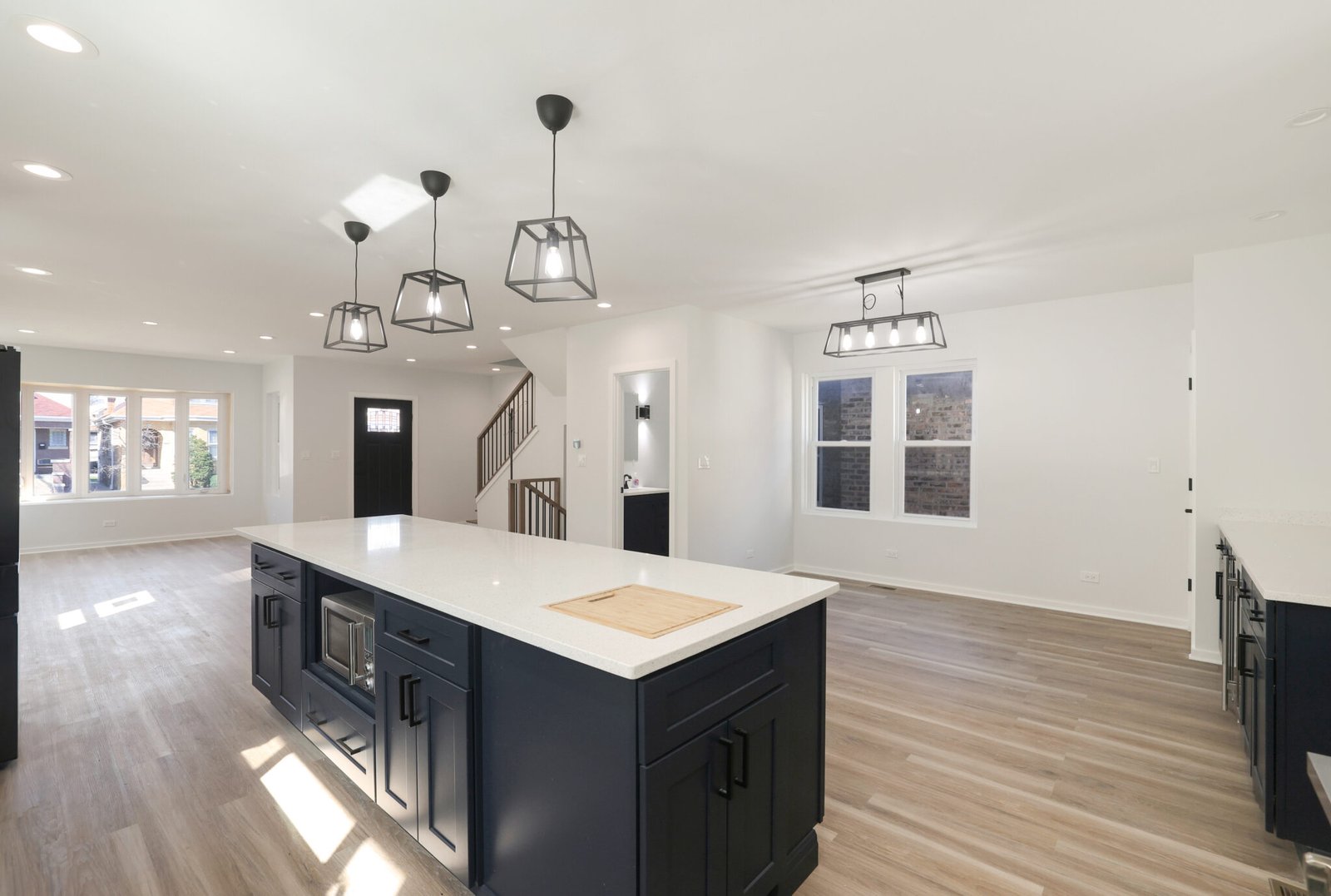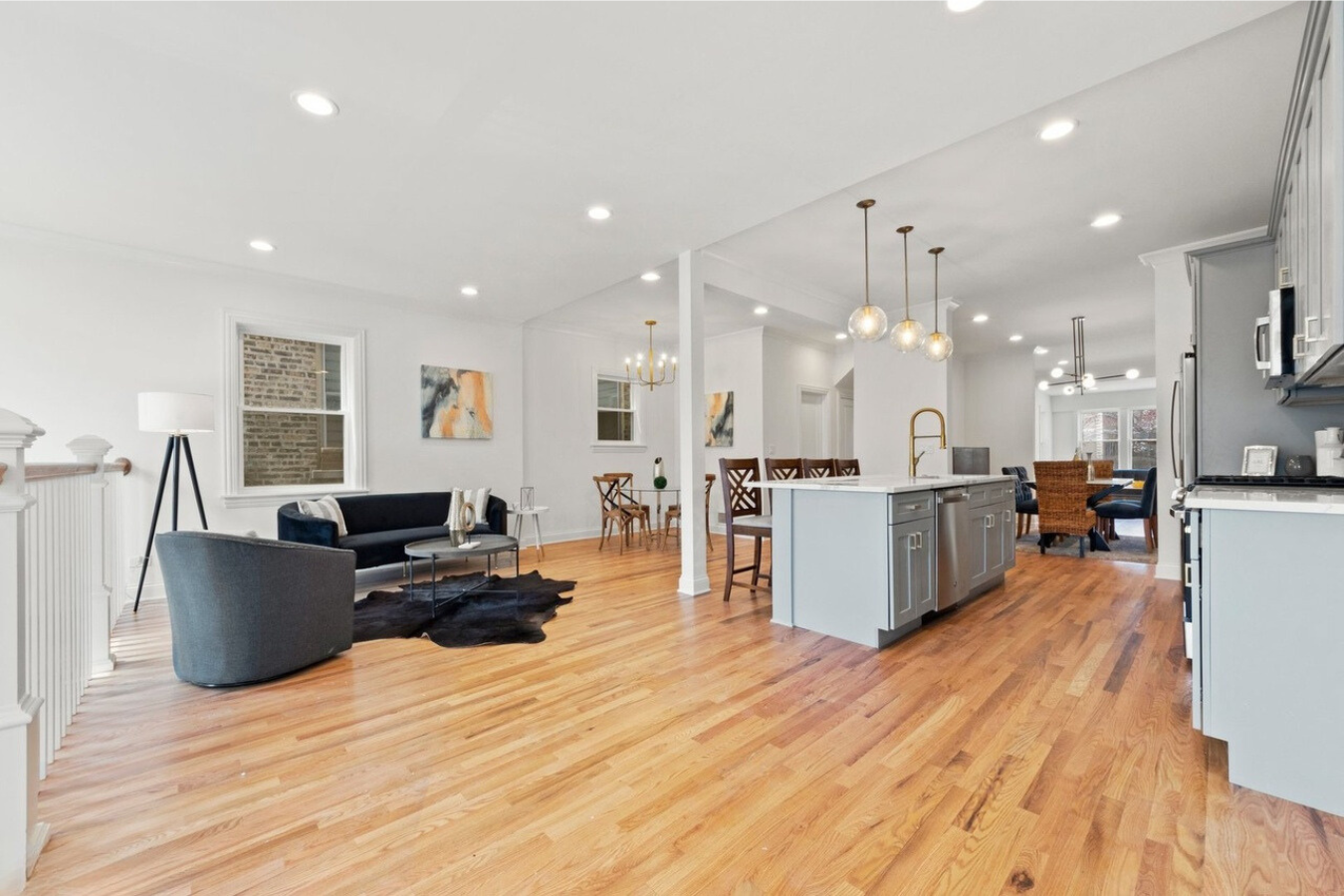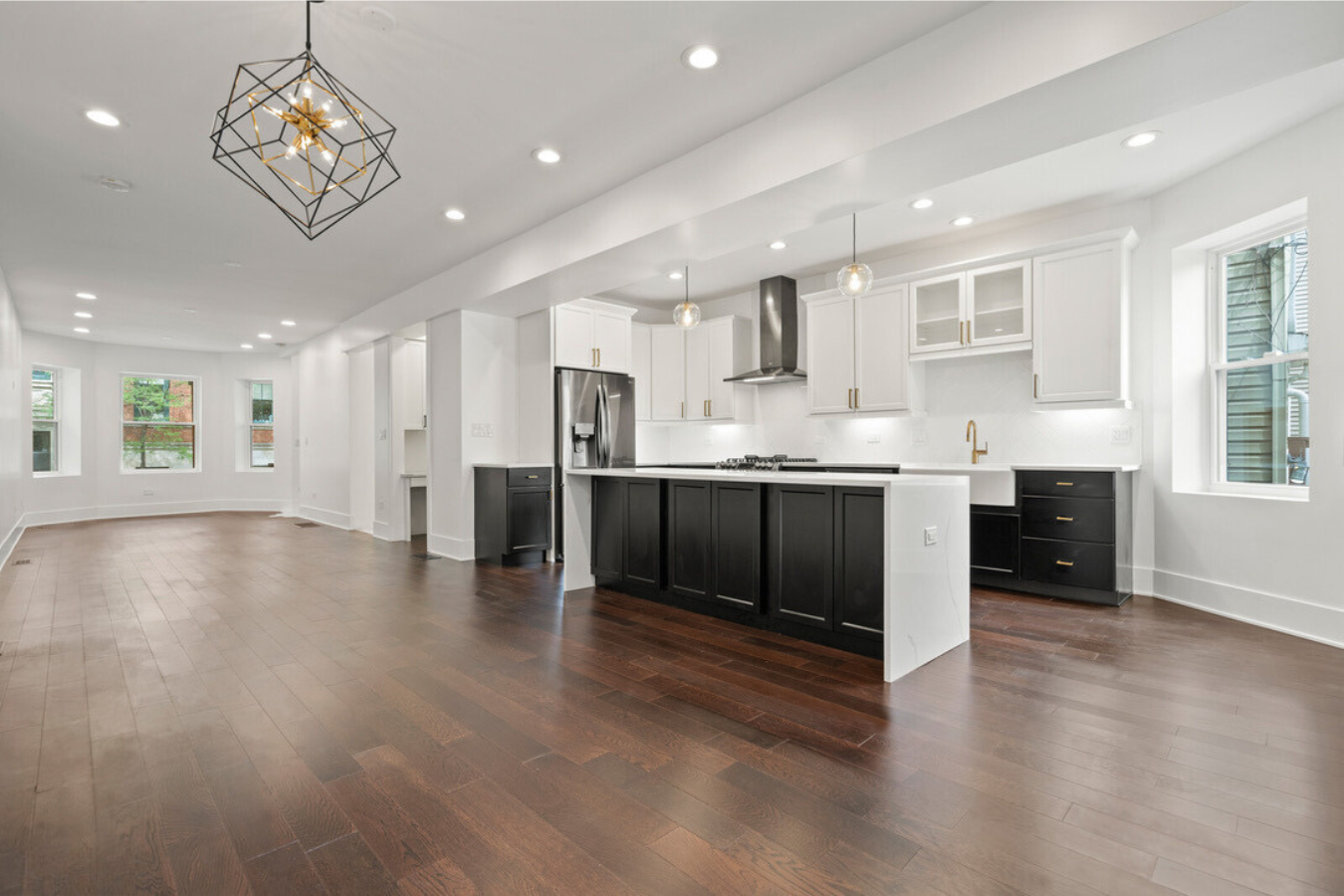Over time, your home may begin to feel outdated or inefficient, prompting the need for a whole house remodel. This comprehensive approach not only revitalizes your living space but also significantly boosts your home’s value and functionality. By investing in a remodel, you can customize your environment to better suit your lifestyle, ensuring each room meets your needs. Furthermore, a well-executed remodel can enhance energy efficiency, improve aesthetics, and increase market appeal, making it a wise decision for homeowners looking to improve their property’s overall worth and livability.
The Benefits of Whole House Remodeling – Enhancing Your Home’s Value and Functionality
While many homeowners may feel overwhelmed by the prospect of a whole house remodeling project, understanding its benefits can clarify the significant positive impact it can have on your living environment. Whole house remodeling is the process of renovating your entire home rather than focusing on individual rooms or areas. This comprehensive approach allows you to create a cohesive design that aligns with your lifestyle and enhances the functionality and aesthetic appeal of your home. You will be able to address outdated features, improve energy efficiency, and incorporate modern amenities that reflect your personal preferences, transforming your house into a space you genuinely enjoy living in.
Definition and Scope
For those new to the concept, whole house remodeling encompasses a thorough redesign of every part of your home. This may include structural changes, updates to electrical or plumbing systems, and a fresh interior layout that suits your family’s needs. Essentially, it involves a holistic view of your living space, allowing you to unify various elements under a single vision. You have the opportunity to make your home more functional and aesthetically pleasing from the ground up, which can significantly elevate your everyday living experience.
Scope of a whole house remodel can vary widely based on your specific desires and budget. Some homeowners may seek a simple cosmetic lift, while others might aim for more extensive renovations that involve changing the home’s layout or adding additional space. Understanding the full scope allows you to make informed decisions on materials, designs, and the contractors you choose to bring your vision to life.
Common Reasons for Remodeling
Scope for remodeling often stems from various motivations that can enhance your home’s value and comfort. One common reason for undertaking a whole house remodel is the desire to update an older home that may have outdated features, leading to inefficiencies and a lack of modern conveniences. You might also want to accommodate a growing family or changing lifestyle needs, which may require alterations to existing spaces to better suit your daily routines. Additionally, many homeowners choose to remodel in order to increase their property’s resale value or attract potential buyers when the time comes to sell.
Whole house remodeling provides you with the unique opportunity to personalize your home and cater to your specific living needs. By addressing foundational issues, enhancing energy efficiency, and designing spaces thoughtfully, you can make profound improvements that resonate throughout your everyday life. This investment not only uplifts your living experience but can also yield substantial returns when it comes time to appraise or sell your home, making it an appealing option for many homeowners looking to boost both functionality and market value.
Increasing Home Value
Market Trends and Valuation
Around the real estate market, home buyers are increasingly seeking properties that fulfill their desires for modern amenities, open spaces, and energy efficiency. Whole house remodeling can significantly enhance your home’s appeal by aligning with current trends. As you invest in renovations that improve functionality and aesthetics, you not only create a space that suits your lifestyle but also position your property to demand a higher selling price. An updated kitchen or a finished basement can catch the eyes of potential buyers, making your home more desirable in a competitive market.
ROI on Remodeling Projects
Along that same line, understanding the return on investment (ROI) of remodeling projects is necessary for any homeowner considering a whole house update. Generally, kitchen and bathroom renovations yield the highest returns, often recouping a significant percentage of your expenses when you sell your home. Investments in energy-efficient upgrades like new windows or insulation can also provide immediate savings on utility costs while enhancing the overall marketability of your property.
With a thoughtful approach to your remodeling strategy, you can maximize returns on your investment. Prioritizing projects that are most likely to add value, and engaging professional help for planning and execution, can lead to substantial increases in your home’s worth. You should evaluate potential renovations not just for their aesthetic impact, but also for the value they bring to your overall investment. Well-executed whole house remodeling not only transforms your living environment but also sets the stage for a profitable future sale.
Enhancing Functionality
Assuming you are contemplating a whole house remodel, one of the most notable benefits you will encounter is the enhancement of functionality in your home. This transformation allows for improved space utilization, enabling you to design areas that flow seamlessly while catering to your specific lifestyle needs. By eliminating wasted space and creating more accessible layouts, you set the stage for a home that not only looks appealing but also serves as a well-functioning environment where you can thrive.
Space Optimization Strategies
Enhancing your living environment through space optimization means rethinking how each area can be tailored to serve multiple purposes. You might consider open concept designs that eliminate unnecessary walls, allowing for a more expansive feel in rooms and encouraging natural light to penetrate deeper into your home. Additionally, you can incorporate built-in storage solutions, such as shelves and cabinets, to eliminate clutter and maximize usable space without sacrificing aesthetics.
Modernizing Systems and Layouts
Against the backdrop of traditional home designs, modernizing your home’s systems and layouts can significantly boost both functionality and efficiency. This involves not only upgrading imperative infrastructure like plumbing, electrical systems, and HVAC, but also reconfiguring spaces to better align with contemporary lifestyles. For example, relocating a kitchen to create an open-concept layout can facilitate easier interaction during gatherings and enable family members to engage while cooking or entertaining.
Space planning also plays an important role in this modernization process, as it involves strategically designing each room to meet today’s demands. Choosing energy-efficient appliances, integrating smart home technology, and ensuring proper flow between living spaces can all enhance how your home performs. This attention to current needs not only improves your daily experience but also makes your property more appealing to potential buyers, ultimately increasing its market value.
Design Considerations
Despite the excitement that comes with planning a whole house remodeling project, it’s crucial to approach the design aspect with careful thought. Each decision you make in this phase can significantly impact your home’s overall functionality and aesthetic appeal. Consider how you and your family live daily, the spaces you frequently use, and how changes can enhance your lifestyle. From the layout of your kitchen to the placement of windows for natural light, each element plays a vital role in the efficiency and attractiveness of your home.
Style and Aesthetic Choices
Between modern minimalism and classic elegance, choosing a style that resonates with you is paramount. Your personal taste should guide your aesthetic decisions, but you also want to ensure that your choices harmonize with the overall architecture of your home. It can be beneficial to create a mood board that reflects the colors, materials, and design elements you adore. This visual representation will serve as a roadmap throughout your remodeling journey, helping you maintain consistency and ensure all areas of your home reflect your unique style.
Sustainable and Eco-Friendly Options
Along with aesthetic considerations, integrating sustainable and eco-friendly options into your remodeling plans can provide long-term benefits for both your home and the environment. Opting for energy-efficient appliances, sustainable materials, and water-saving fixtures not only minimizes your carbon footprint but can also enhance your home’s value. These eco-conscious choices are becoming increasingly desirable for homebuyers, making them a smart investment.
This thoughtful approach to sustainability can extend to various aspects of your remodel. For instance, you can choose reclaimed wood for flooring, which not only adds character but reduces the demand for new materials. Incorporating energy-efficient windows and insulation can dramatically lower heating and cooling costs, making your home more comfortable while contributing to environmental conservation. Also, consider introducing smart home technologies that increase efficiency and convenience, adding technological sophistication to your home. Embracing these sustainable options positions you as a responsible homeowner while ensuring that you enjoy a more functional and valuable living space.
Choosing the Right Professionals
Unlike begining on smaller home improvement projects, whole house remodeling involves a comprehensive approach that requires a team of skilled professionals. It’s necessary to select the right individuals or companies that possess the expertise needed to bring your vision to life while ensuring that the work is completed to code and within your timeline. Evaluating potential contractors based on their credentials, experience, and previous client reviews can help you determine if they are the right fit for your specific needs. Investing time in this selection process might seem tedious, but it can ultimately save you from headaches later on.
Contractors vs. DIY
One of the most significant decisions you’ll face during your whole house remodeling journey is whether to hire contractors or tackle the projects yourself. While the DIY route can save money, it often demands a considerable investment of time, effort, and expertise. If you have the necessary skills and experience, you might find satisfaction in managing certain aspects of the remodel on your own. However, keep in mind that some tasks require specialized knowledge and licenses, particularly when it comes to plumbing, electrical work, and structural changes. Hiring professionals may provide peace of mind, ensuring that the work is completed efficiently and safely.
Importance of Budgeting and Planning
Planning your budget is a pivotal step in your remodeling journey. Undertaking a whole house remodel can come with unexpected costs, making it necessary to have a clear financial picture from the beginning. By outlining your project in detail, you can allocate funds wisely, ensuring you have the resources for both the necessary components and any splurges you may desire. Setting aside a contingency fund can also help mitigate unforeseen expenses, thus allowing your remodel to proceed more smoothly.
With proper budgeting and planning, you position yourself for success in your remodeling efforts. By thoroughly reflecting on your priorities and the scope of work, you create a roadmap that guides your decisions and keeps the project moving forward. This diligence not only alleviates stress but also ensures that you’re maximizing the value you gain from your investment, ultimately leading to a functional and beautiful home that enhances your everyday life.
Navigating the Remodeling Process
Once again, launching on a whole house remodeling project can feel overwhelming, but understanding the process can help streamline your experience. You will need to start by outlining your goals and priorities for the remodel, which includes setting a budget, determining the scope of work, and finding the right professionals to work with. Engaging with experienced architects, contractors, and designers will be crucial, as they can provide invaluable insights into the feasibility of your ideas, as well as help you avoid common pitfalls. Communication is key—ensure you express your vision clearly and maintain an open line of dialogue throughout the entire process.
Once you have your team in place, it’s time to begin the planning phase. This includes securing necessary permits, defining timelines, and finalizing design choices. Establishing a timeline that reflects realistic expectations for completion will help you stay organized and focused, especially when it comes to managing any unexpected delays or changes. By staying proactive and maintaining an ongoing conversation with your contractors, you’ll foster a collaborative environment that leads to a successful remodeling experience.
Timeline Expectations
The timeline for whole house remodeling projects can vary significantly depending on the scope of your renovation, the size of your home, and the availability of materials and labor. It’s crucial to build a timeline that considers not only the construction phase but also the time needed for planning, design, and permitting. Typically, you might expect several weeks to a few months for these initial steps before construction even begins. During the remodel itself, timelines can range from a few months for minor renovations to over a year for extensive projects. Understanding these phases allows you to set realistic expectations, making the process less stressful.
By discussing your timeline concerns with your contractor, you gain a more accurate understanding of how prolonged certain stages might be. Keeping a flexible mindset is beneficial, as various factors can affect your timeline, such as weather conditions, supply chain issues, or unforeseen structural challenges. Having a clear communication plan in place can help you feel more informed and involved, allowing you to adjust your expectations as needed.
Common Challenges and Solutions
Process challenges are an inherent part of any extensive remodeling project, and being aware of them can significantly reduce stress. For instance, you may encounter issues such as budget overruns, changes in project scope, or delays due to permitting and inspections. Acknowledging these potential pitfalls early on allows you to devise strategies to minimize their impact. Engaging your contractor in transparent discussions about progress, potential setbacks, and any budgetary changes will create a constructive workflow and ensure everyone is on the same page.
Considering the complexities that can arise during a whole house remodel, it is crucial to approach these challenges with a proactive mindset. You can create a contingency fund in your budget for unexpected expenses or delays, which will provide a financial cushion when surprises occur. Establishing a strong relationship with your contractors and maintaining open lines of communication will also allow you to identify and address issues as they arise, making it easier to adapt and find solutions throughout the remodeling journey.
Summing Up
Hence, undertaking a whole house remodeling project can significantly boost your home’s value and enhance its functionality. By focusing on the various aspects of your property, you can create a living environment that suits your lifestyle while increasing its appeal to potential buyers. Improved layouts, modern amenities, and energy-efficient upgrades not only improve your daily living experience but also position your home favorably in the real estate market. Investing in a cohesive design can transform your space into a comfortable sanctuary that reflects your personal style and meets your family’s needs.
Furthermore, whole house remodeling allows you to address any underlying issues in your home, such as outdated systems or structural concerns, which can save you from costly repairs in the future. By maximizing your home’s potential, you not only enjoy the immediate benefits of a refreshed space but also secure a worthwhile investment that pays dividends over time. Ultimately, the decision to remodel your entire home can lead to a harmonious balance between aesthetics and practicality, ensuring that your living space is both enjoyable and valuable.





